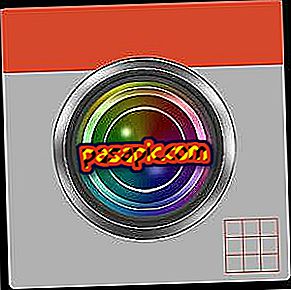What does TDI and HDI mean in engines

If you want to buy a new car or you are looking for the best diesel engine, sooner or later you will find many acronyms that, at first glance, seem unintelligible. Among them, there are two that stand out and that you can see in many cars: TDI and HDI. These acronyms, as well as many others that exist, highlight technical aspects of the vehicle that, if you are not an expert, can be difficult to understand.
If you want to know what TDI and HDI means in the engines of cars, read the following article in which we explain the characteristics of each one as well as the advantages they bring to us.
What does TDI mean in a car?
TDI stands for the English name Turbo Direct Injection, that is, turbo direct injection . These are a type of engines that have a combustion chamber located in the head of the piston that is equipped with turbo. From the origins of diesel there is direct injection as a concept, but its appearance in cars has to wait.
Among its many advantages is the fact that, as the combustion chamber is smaller, much less energy is lost, causing the heat that escapes through the walls of the cylinder or the chamber where the combustion takes place. Much smaller. The consequences of this is that, finally, consumption is much lower, while giving more performance and better quality. Any heat that is lost is energy that is not used, and here it is used much better. In addition, the cold start is also ostensibly better.
What is the turbo
When we speak of turbo we refer to the supercharging system by which a turbine is located in the exhaust area so that it turns when the gases that escape escape through it. An axle also joins the compressor intake, forcing the air into the cylinders. Since the first large diesel engines that used the turbo appeared, however, it was not until 1987 that this supercharging system began to be used in automobiles. Until then its use was limited to large machinery engines.
How the TDI works
The first vehicle equipped with turbo diesel engines with direct injection was the Fiat Croma 1987. From this extended this type of engine, whose operating system is as follows:
- A turbocharger is responsible for supplying the fresh air motor, making the cylinder fill optimally.
- Right after the compression, an injector introduces gas oil at very high pressure.
- The effective encapsulation of this motor means that there are no loud noises, in addition, vibrations are reduced thanks to hydraulic supports.
As we have said, it was the Italian FIAT the first manufacturer to use turbodiesel engines with direct injection, however, the abbreviations with which it came onto the market were TDiD. The fact is that these acronyms respond more to a willingness to differentiate between brands and marketing aspects than to anything else. The acronym TDI has been used by the VAG group - Volkswagen - being registered in many countries and used only by the cars of its subsidiaries.

HDI: meaning
HDI responds to the acronym of High Presure Diesel Injection, or what in Spanish would be high pressure diesel injection . These engines, like the TDI, are engines that run on diesel, with direct injection and with turbocharger. However, just as TDI is registered by the Volkswagen group, the HDI denomination was chosen by the PSA group to name the technology invented by the FIAT group. In the same way, other manufacturers such as Ford or Volvo call them Tdci or D4 respectively.
Most HDI engines are equipped with Common Rail, a system that allows to make more precise and accurate injection and consumption of the engines, making their benefits are increased and, on the other hand, reduce the gases that are expelled by the engine and the noise caused.
HDI operation
This Common Rrail system -or injection by common pipe-, is a system that has its particularity in an injection pump that provides the necessary pressure in the injectors -at 1, 500 atmospheres- through a ramp that increases the performance of the engine as well as reduces the fuel that is spent.
What do other acronyms of diesel engines mean?
In addition to TDI and HDI there are many other acronyms that use different brands and manufacturers to differentiate their engines, below we explain the meanings of the acronyms of diesel engines :
- SDi : Standard Diesel Injection
- GTi : Gran Turismo Injection
In the following article we explain what GTI and SDI mean.
- TD : Diesel Turbo
- TDi : Turbo-diesel direct injection
- TDDi : Direct Diesel Injection with Turbocharger
- TDCi : Diesel Common-rail injection with Turbocharger
- CDTi : Diesel Common-rail injection with Turbocharger
- HDi : High Pressure Diesel Injection
- TSi : Stratified injection with Turbocharger

What to do before buying a car
If you want to know the differences and particularities between the TDI and HDI engines and know which is the best diesel engine is why it is surely in your mind to change your car or buy one again. In this case, we recommend that you use Carnovo, the dealership car comparator that makes it possible to buy any completely new vehicle at the lowest possible price.
Just 24 hours later, you can receive the best offers for those vehicles that you choose easily, quickly and without any commitment.


